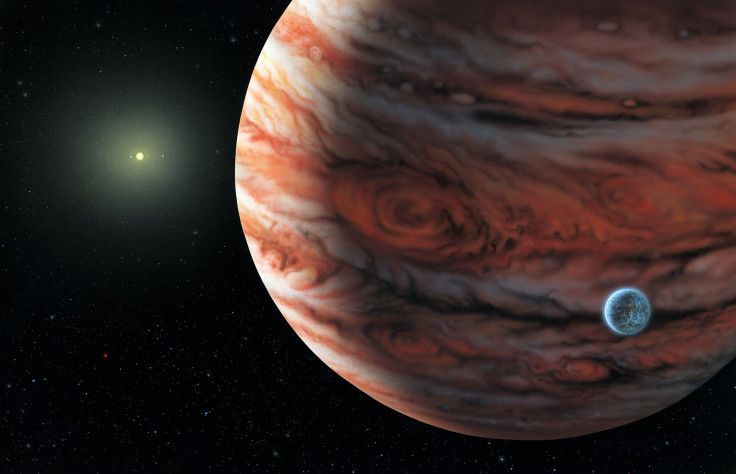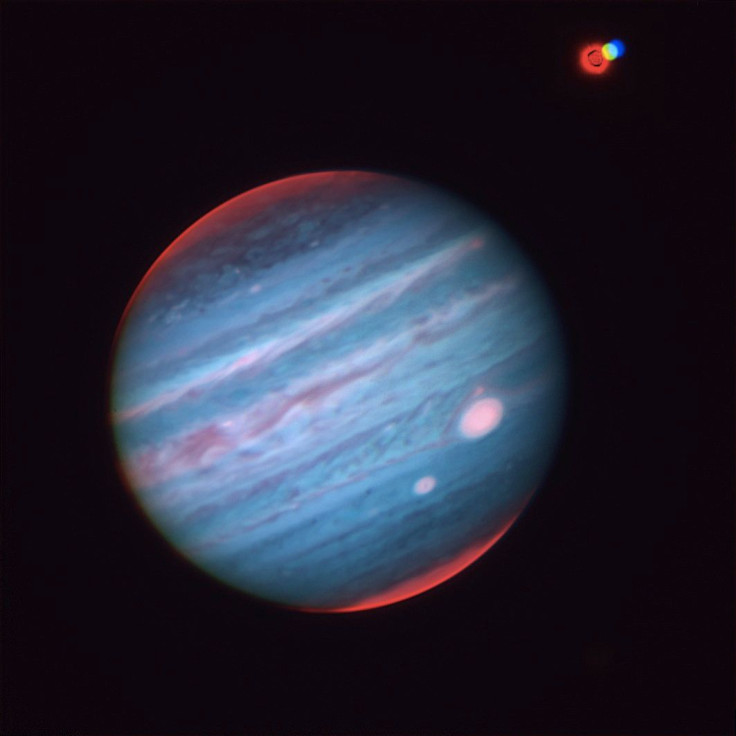Jupiter's Red Spot Glows Beautifully In Stunning New Infrared Photo

A new image released by the National Astronomical Observatory of Japan shows a view of Jupiter that you've likely never seen before -- an infrared image that shows the planet's iconic Great Red Spot turned blue.
Jupiter, the largest planet in the solar system, and its moon, Ganymede, appear in the photograph, which was taken by the group's Subaru Telescope, located in Hawaii. Jupiter's so-called red spot is actually a storm that has raged on that planet for between 200 to 350 years, according to NASA. The red spot storm is so large that three Earths would fit within its boundaries.

The storm is thought to be the biggest in our solar system. Thermal images of the storm, first obtained in 2010 by the European Southern Observatory and other ground-based telescopes, showed swirls of warmer air and cooler regions never seen before within Jupiter’s Great Red Spot, enabling scientists to make the first detailed interior weather map of the giant storm system.
© Copyright IBTimes 2024. All rights reserved.






















